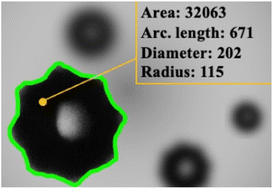Our new paper which came from collaboration with ITMO University has been just published in a Royal Society of Chemistry journal:
Michael Nosonovsky, Ekaterina V. Skorb et al. Automatic image processing of cavitation bubbles to analyze the properties of petroleum products, Digital Discovery, 2024, 3, 1101 – 1107
We have developed a new computer vision method of automatic image processing of cavitation bubbles to classify petroleum products with different octane numbers (ONs) using an artificial neural network (ANN). Ultrasonic irradiation induces cavitation bubbles, which exhibit growth, oscillations, and resonance shapes. Gasoline solutions may have different physical and chemical properties. While a precise understanding of how these properties impact bubble dynamics is challenging, training the ANN algorithm on bubble images allows classification of gasoline bubbles with different ON values. The integration of the ultrasonic cavitation method with computer vision and artificial intelligence techniques offers a promising way for real-time ON assessment in liquid flow.
The paper was selected for the journal front cover

Our previous study on this topic was:
I. Korolev , T. A. Aliev , T. Orlova , S. A. Ulasevich , M. Nosonovsky and E. V. Skorb , When bubbles are not spherical: artificial intelligence analysis of ultrasonic cavitation bubbles in solutions of varying concentrations, J. Phys. Chem. B, 2022, 10.1021/acs.jpcb.2c00948 126 , 3161 —3169
